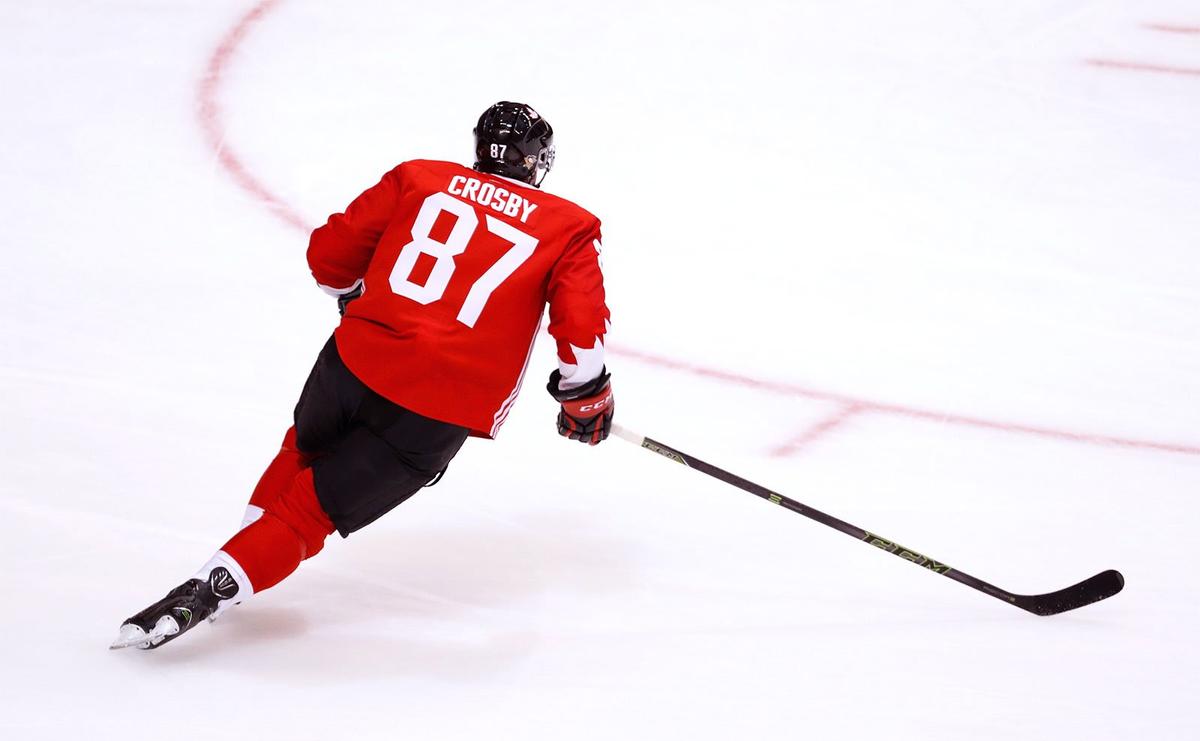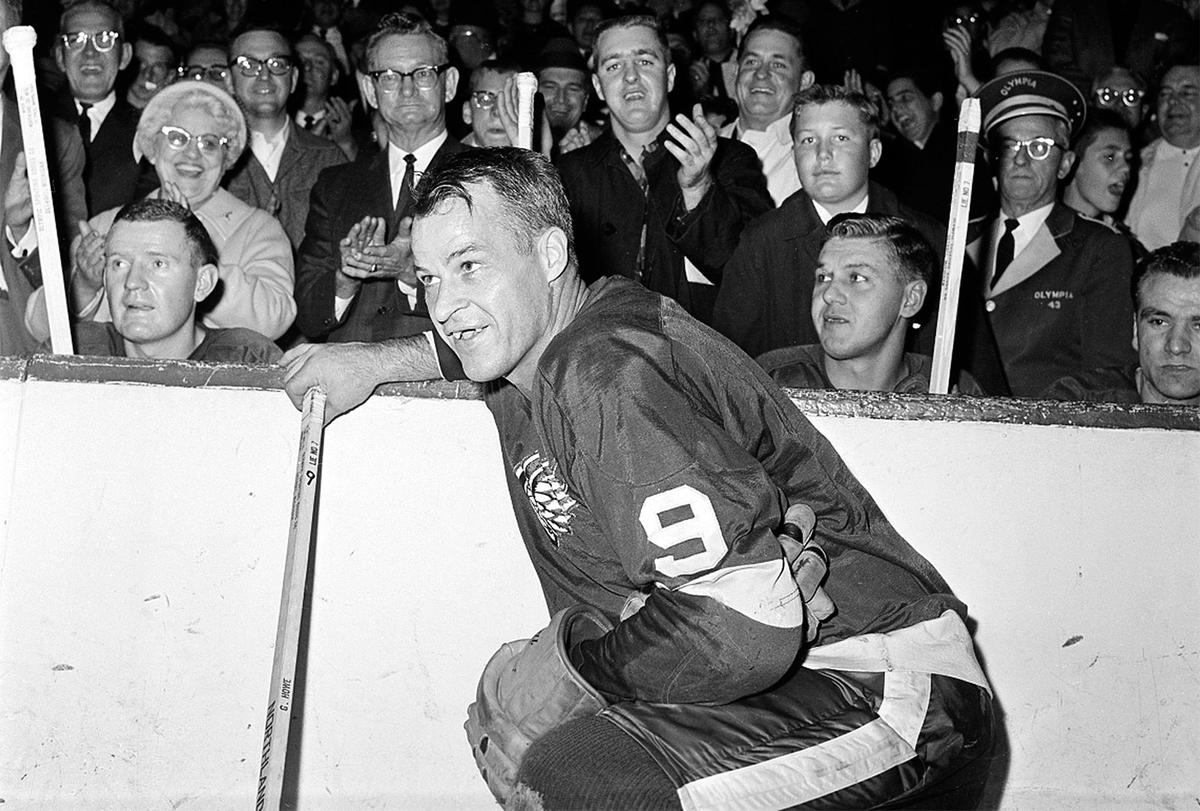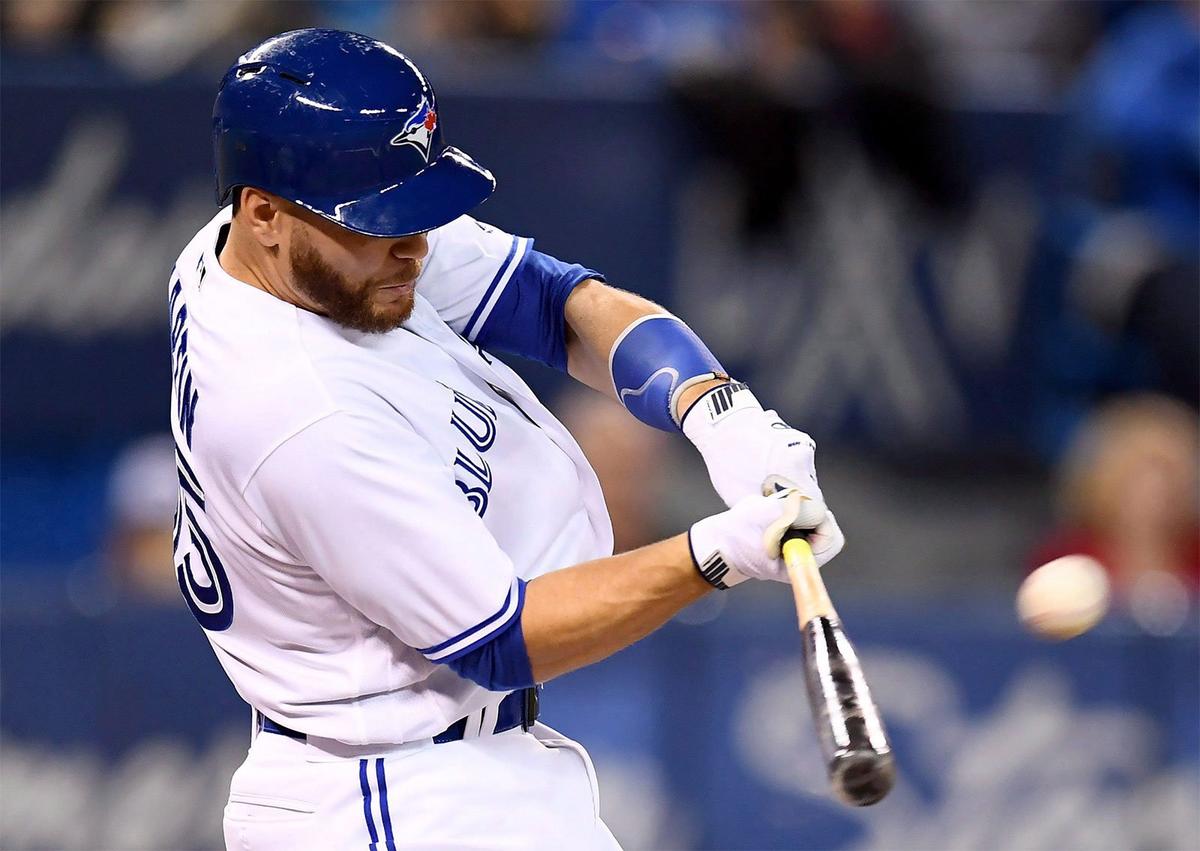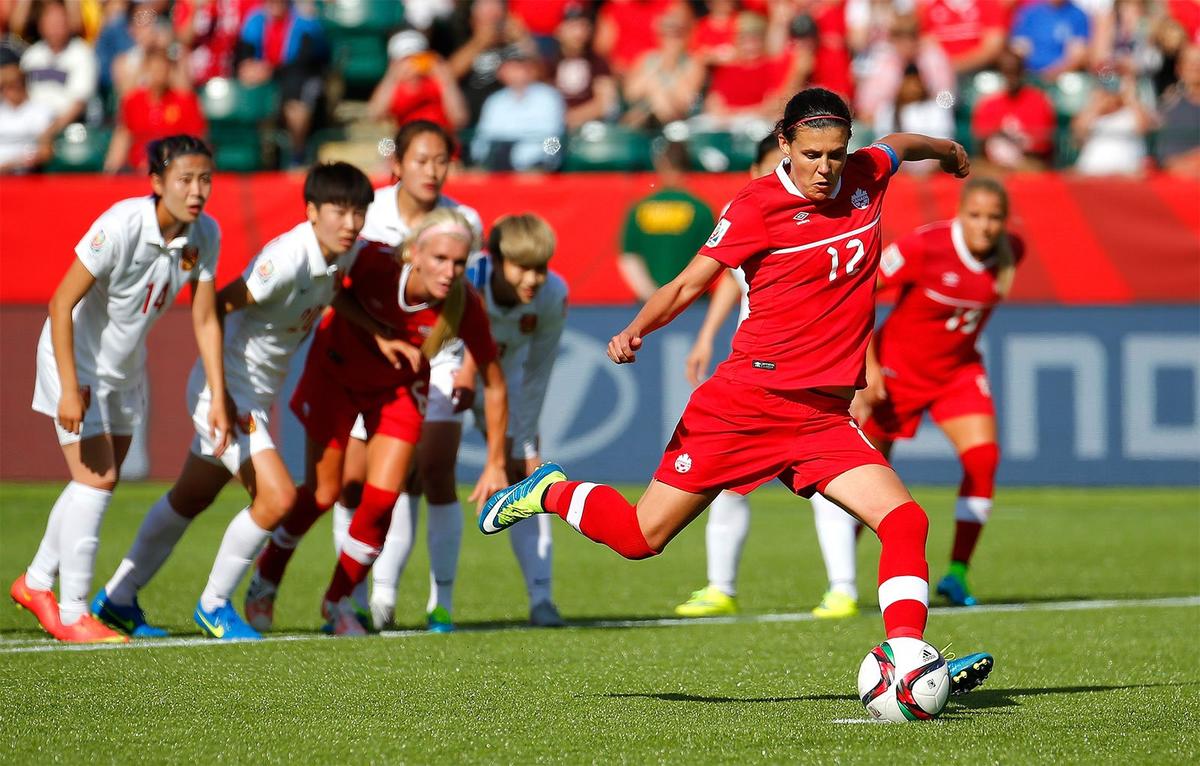Why Canada will always love hockey
Why Canada will always love hockey

(Gregory Shamus/Getty Images)
HOCKEY AND OUR
NATIONAL HEARTBEAT
Our demographics are changing and we have more sporting options than ever. But at 150, Canada remains a hockey country… and looks like it always will be. By Stephen Brunt
There are plenty of reasons to believe that hockey ought to have loosened its grip as Canada’s game of myth and legend by now.
As we celebrate the country’s 150th birthday, so many changes have taken place in sport and the manner in which we consume it that have worked to undermine hockey’s central role in the national culture, especially in the 50 years since the great Centennial bash of 1967. Major League Baseball and the National Basketball Association set up shop here, challenging the National Hockey League’s dominance, while NHL expansion to non-traditional markets in the United States took it farther and farther away from the frozen ponds of yore. Canada has played host to the Olympic Games three times since ’67, which has worked to broaden both our sports interests and our supply of national heroes (though of course the men’s and women’s hockey gold medals were a huge part of the story during the patriotic orgy of 2010).
Combine those developments with an increasingly diverse population — a significant percentage of which was raised outside the bounds of the shinny belief system — and a technological and information revolution, and suddenly the notion of families gathered ’round a radio or television on Saturday night to listen to the one-game broadcast each week seems as anachronistic as a trip to town by horse and buggy.
Hockey shouldn’t matter the way it once did. Not with fewer of us playing; not with every game in every sport from everywhere available instantly via one device or another; not when there are other Canadian athletes and other athletes based in Canada who can fill the role of hometown favourites.
Yet, as a recent survey of more than 1,500 Canadians confirms, hockey persists.
It is still a clear No. 1 for Canadians. Hockey triumphs are still generational signposts. Great hockey players are still icons, and any examination of national identity — as elusive to pin down now as it was in 1867 or 1967 — is eventually going to get around to how much we love that game. Data can be mined for signs that those things may be less true than they once were, for hints that Gen Xers and Millennials are less passionate about hockey than previous generations. It’s certainly there in the fine print, but so is the statistical evidence that for both them and their elders, hockey remains a significant part of what makes us us.
A great, big honking cliché, that, but apparently one that is still true.

Gordie Howe. (AP/CP)
As in ancient times, any discussion about hockey and Canada begins with the climate, which is why our forebears, in an effort to battle back against the winters in this ridiculously inhospitable land, took to strapping on skates. They found the nearest frozen pond or river or prairie slough, fashioned a stick, invented the puck and stayed out until darkness fell in mid-afternoon or their toes turned blue, whichever came first. Had Canada’s weather patterns been similar to those of, say, Tahiti, it wouldn’t have worked out quite that way. But given that mon pays ce n’est pas un pays, c’est l’hiver, etcetera, etcetera, it was that or sit by the fire for six or seven months a year. And so, we became a nation of hockey players rather than a nation of surfers.
The game was organized and professionalized in the early days of the 20th century, morphing into the NHL 100 years ago, and though the first Ottawa Senators came and went, the Hamilton Tigers and Montreal Maroons expired, and only two of the Original Six teams were based in Canada, our sense of ownership never wavered. Radio, then television, only enhanced that proprietary feeling, knitting the nation together from coast to coast to coast, adding Newfoundland even before it joined Confederation through Foster Hewitt’s famous “Hello, Canada…” invocation.
Not that hockey stood alone. Lacrosse pre-dated the arrival of the Europeans and was acknowledged as our original national sport. Canada spawned its own version of football before the proclamation of the British North America Act, which evolved in parallel with the American version of the game. Baseball was played here from the sport’s origins in the 19th century, the border with the U.S. all but irrelevant when it came to what would be dubbed our neighbours’ national pastime. A Canadian in exile famously invented basketball, and occasionally our athletes excelled in other sports on international stages.
Still, none of that threatened our hockey-centricity, so indisputable was its hold on the Canadian imagination.

Toronto Blue Jays catcher Russell Martin. (Frank Gunn/CP)
But now? Much of that should die with the Baby Boomers, the last generation that actually remembers a world in which choices were so obvious and so limited, that grew up in a more monochromatic country, that took outdoor ice and backyard rinks and pick-up games for granted, that knew a local kid who was the best player in town, who was a star in the juniors, who played a bit of minor-pro hockey, who made it all the way to Maple Leaf Gardens or the Montreal Forum.
The Boomers are parents and grandparents now.
Their kids, their grandchildren, have grown up in a very different place. No more sitting around waiting for one game a week that didn’t come on until after it had already begun. The world, including the sports world, is at their fingertips, instantly. They are free to form allegiances that have little or nothing to do with geography. Why automatically cheer for the Maple Leafs when you can watch, say, the Dallas Cowboys on any given Sunday, or Liverpool FC as easily and faithfully as anyone living in Merseyside? How do you define “home” or “home team” when you can experience life from anywhere virtually no matter what your vantage point?

As for playing the game, hockey is unique among sports in that participation requires mastering a separate skill — skating — which was a natural rite of passage for Canadians of past generations. (Once again, thank the weather for that.) But for those who arrive in Canada from elsewhere, being able to skate certainly isn’t a given, and getting a late start is an all-but-impossible handicap in becoming a hockey player. (One result in the survey data that reads like an empty boast: Do 51 per cent of Canadians really know how to skate backwards?) You don’t hear a lot of stories about NHLers who didn’t lace up before they were 10 or 12 or 14, whereas there are successful late bloomers in nearly every other sport. Israel Idonije, who grew up in Brandon, Man., didn’t play football until high school, barely understood it when he began college, and yet eventually started at defensive end for the Chicago Bears.
In hockey, by the time you’re six or seven, the die is cast. The unorganized version of the sport — including that old staple, road hockey — is nearly extinct. To play, you need to be in the system, and unless you can skate, unless you are an elite talent, unless your family is willing to invest heavily in equipment and league fees and special coaching and summer skills programs, you probably never get beyond a couple of years of house league, or at best drop out as a young teen.

Christine Sinclair (Kevin C. Cox/Getty Images)
The mass-youth-participation sport for children in this country is soccer, and has been for decades. It’s simple. It’s cheap. It promotes fitness. It’s relatively safe. Perhaps as a result, viewing interest in the world game has shown a clear spike among Canadian millennials.
So far, that hasn’t led to us producing our own Lionel Messi, though Christine Sinclair has been one of the best female players on the planet for much of her career. We have also spawned world-class talents in other sports: an NBA MVP in basketball, Steve Nash; American League and National League MVPs in baseball, Justin Morneau and Larry Walker; a Cy Young Award winner and Baseball Hall of Famer, Ferguson Jenkins (plus baseball provided one of the country’s signature sports events, Joe Carter’s World Series-winning home run for the Toronto Blue Jays in 1993); four men — Percy Williams, Harry Jerome, Ben Johnson and Donovan Bailey — hailed as fastest on Earth; a Masters winner in golf, Mike Weir; and a wave of Olympic medalists in both the Summer and Winter Games. We are in many ways a multi-faceted sporting nation, which, if it doesn’t quite punch above its weight internationally the way Australia does, has evolved during the Own the Podium era into something far more than just pucks.
But no, those numbers don’t lie — hockey remains No. 1 in our heads and our hearts, even as that generational shift is taking place.
The Montreal Canadiens and Toronto Maple Leafs are still the country’s most popular hockey teams, neck and neck for first place and miles ahead of the other five Canadian-based NHL franchises, which seems like a throwback to another era. Canadians watched hockey more than anything else with their parents and grandparents when they were growing up and watch it today more than anything else with their friends and kids.
No surprise, then, that the 1972 Summit Series sits on the survey’s short list of our proudest moments as a nation, right up there with Vimy Ridge and the War of 1812 — remember that this is a country where Don Cherry made the short list of Greatest Canadians.
And then comes the clincher, the most telling line of the survey and the part that makes the rest of this seem like nitpicking, where a full quarter of the Canadians who responded say that they consider Sidney Crosby to be the greatest athlete of the 21st century.
“Remember that this is a country where Don Cherry made the short list of Greatest Canadians.”
Not to take anything away from Sid: When they carve the hockey Mt. Rushmore, he’ll be on it with Wayne Gretzky and Gordie Howe, Bobby Orr and Mario Lemieux, the Rocket and… well, it gets contentious after that. He has three times been the central talent on Stanley Cup–winning teams, and he has been the star among stars during an unprecedented modern period of dominance for Canada on the international stage.
But we live in an age in which Usain Bolt has shattered the limits of human potential on the track and Michael Phelps has done the same in the pool; in which LeBron James may have nosed ahead of Michael Jordan in the two-person race to be named the greatest basketball player of all time; in which Messi and Cristiano Ronaldo have both laid claim to dominating the sport that captivates more of the planet than any other; in which Serena Williams has ended all debate as to whether she is the greatest female tennis player of all time and Roger Federer (in what has been a golden age for the sport) has had a history-making run among the men; in which Tiger Woods, before the fall, was like nothing ever seen on a golf course; in which Tom Brady made history as a five-time Super Bowl-winning quarterback. Plus, if you’re willing to forgive or rationalize PED use, Barry Bonds was the greatest baseball player since Babe Ruth.
And yet in Canada and only in Canada, the land of backwards-skaters, Crosby reigns supreme. Nowhere else on Earth would that be the case.
So hockey is still there. It still defines us. Even if Saturday nights are no longer a great, national communal moment, even if the Blue Jays can temporarily turn the country baseball mad, even as the next batch of Olympic heroes come and go, and presumably even if our men’s soccer team finally makes it back to the World Cup.
Those sounds — the scrape of skates on ice, of stick meeting puck, of play-by-play announcers who sound like Foster Hewitt or Bob Cole, their voices rising in anticipation of what’s to come — remain in sync with our national heartbeat.
Perhaps someday that won’t be true. But someday isn’t now.
Reporter: Stephen Brunt
Published: June 30, 2017